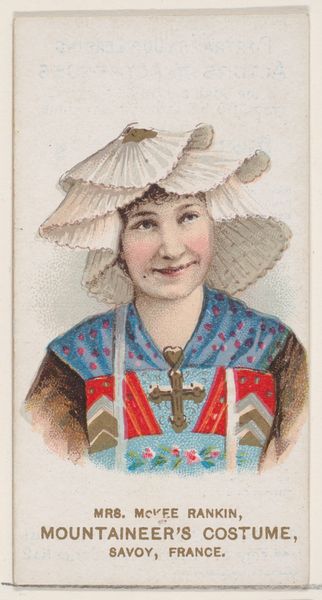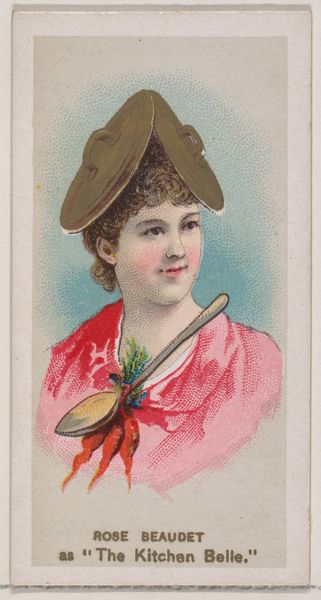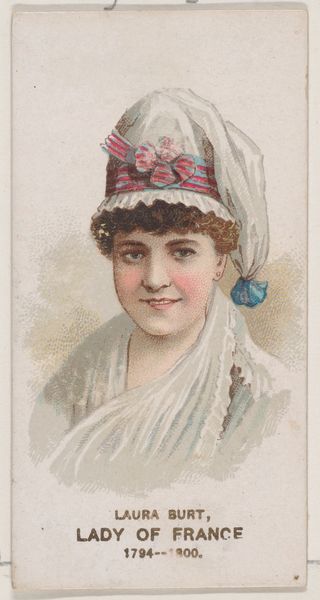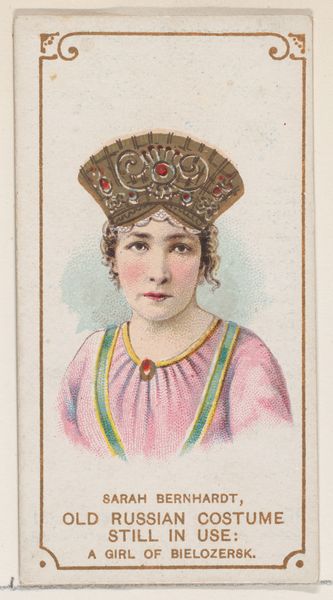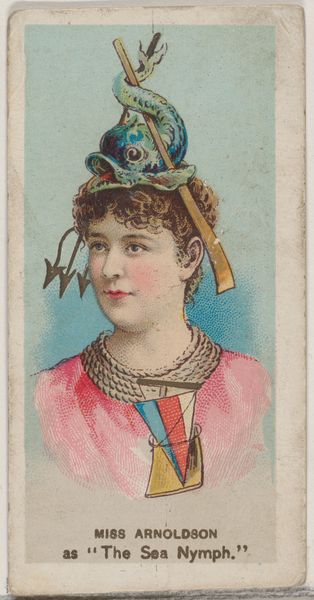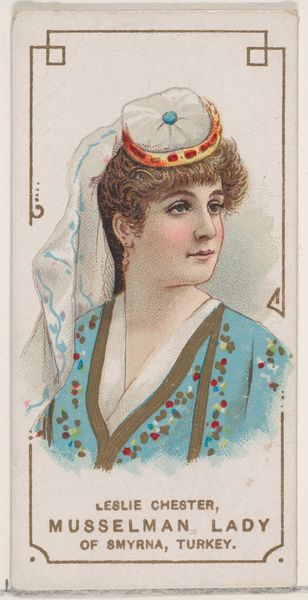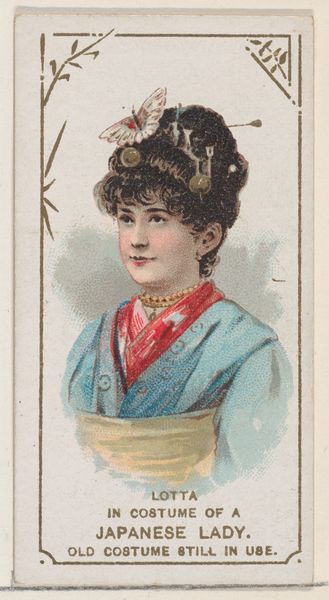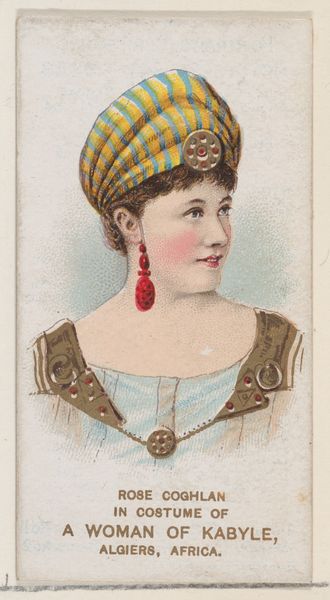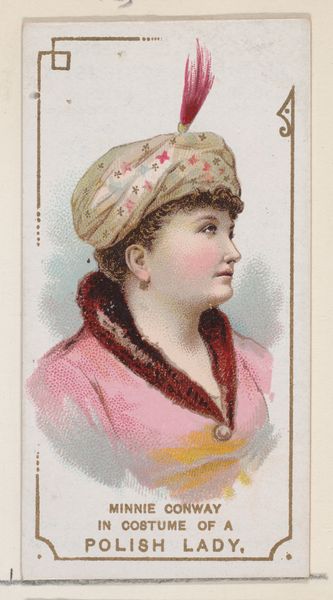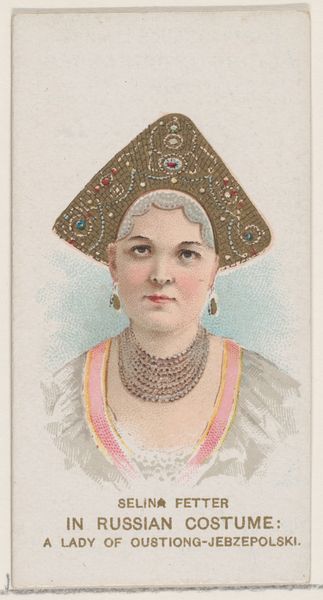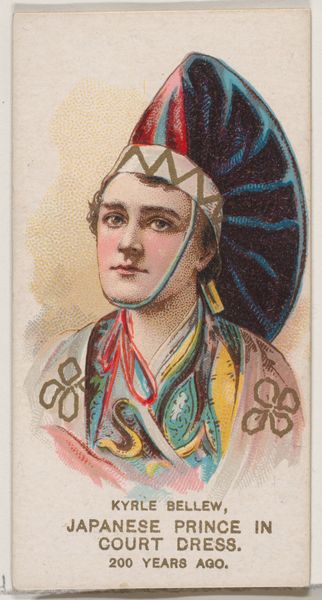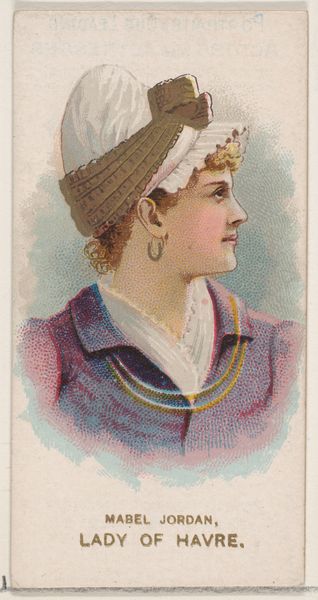
Helen Standish Dressed as Japanese Lady, from the set Actors and Actresses, Second Series (N71) for Duke brand cigarettes 1888 - 1890
0:00
0:00
#
portrait
# print
#
caricature
#
coloured pencil
#
japonisme
Dimensions: Sheet: 2 3/4 x 1 1/2 in. (7 x 3.8 cm)
Copyright: Public Domain
Curator: Alright, let’s talk about this intriguing little piece. This is "Helen Standish Dressed as Japanese Lady," part of a set called "Actors and Actresses, Second Series" (N71) by W. Duke, Sons & Co., dating from between 1888 and 1890. These were created as promotional items for Duke brand cigarettes. The artwork consists of a coloured pencil drawing on print. Editor: My first thought is…exoticism packaged and sold with smokes. She looks lovely, yes, but that arrow sticking out of her hair feels like a cultural potshot. There’s a sweetness to the color palette but something also feels off. Curator: You've nailed it! These trade cards reflected the growing Japonisme craze in the West at that time. Ukiyo-e prints were very popular, and Western audiences had a superficial taste for the aesthetic. Tobacco companies jumped on board, offering images like this one as collector's items with their cigarette packs. Editor: So, a kind of marketing ploy, piggybacking on genuine art? It feels like a painted fantasy more than anything to do with genuine Japanese culture. Like, "Let's put a Geisha in a box!" Curator: Exactly. It's about constructing an exotic 'other' to make the product more appealing. Think about the role advertising plays: How it simplifies and sometimes appropriates to grab our attention. Helen Standish, an American actress, is essentially playing a role within a role here, filtered through a very Western gaze. Editor: Which gives it a strange doubling-down on artifice. And I bet Helen Standish didn’t have any say on how she was presented in that picture. Still, there is an appealing strangeness to this print. I wonder how someone discovering it would feel? Curator: Well, these cards give us insight into the social and visual culture of the late 19th century and speak volumes about how society consumed and marketed “foreign” cultures for their own gain. Editor: Makes you think about what our own little fads and appropriated images will look like a century from now, doesn't it?
Comments
No comments
Be the first to comment and join the conversation on the ultimate creative platform.
